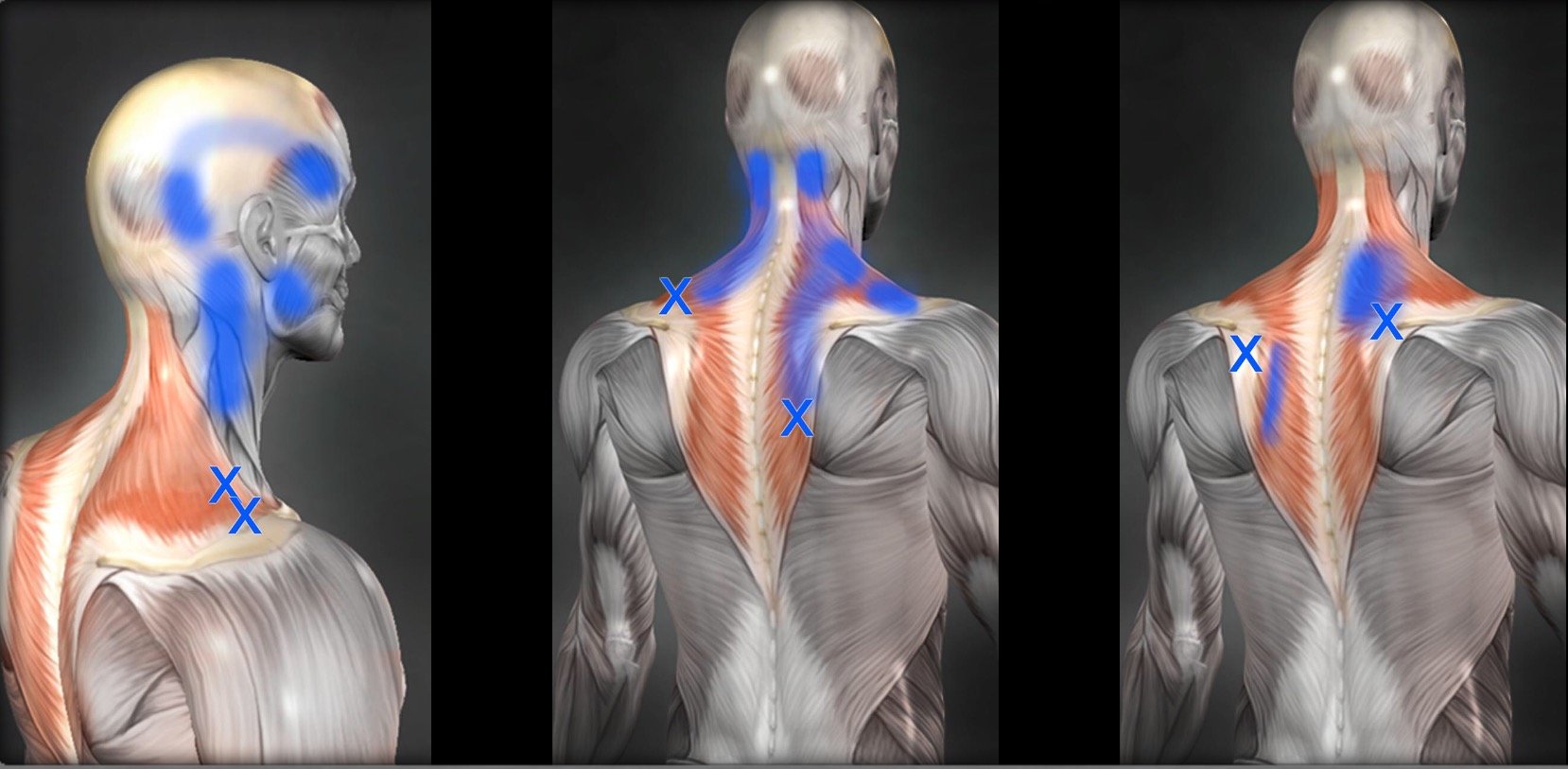Trigger Point Therapy
Anyone that has been injured or has consulted an acupuncturist or physiotherapist for pain management has likely heard of a trigger point. But what is a trigger point and why are they so relevant when dealing with pain?
A trigger point is that “knot” you feel in a tight and sore muscle. They are a small (1-2 mm) and described as an extremely tender point or nodule found in muscle tissue. They are very common and develop as a reaction of muscles to the numerous stressors placed on them - injury, overcompensation, and emotional stress. The most common sites for trigger points are the neck, shoulders, back and hips, but really they can be found in any soft tissue of the body.
There are 4 categories of trigger points but we will explore the 2 most often discussed.
Active Trigger Points
Active trigger points are often the reason people seek out acupuncture and/or dry needling, because active trigger points cause pain and/or other symptoms such as: numbness, sensitivity, lack of mobility, weakness, or paresthesia (pins & needles sensation). The pain produced by active trigger points is often not felt in the local area but typically in a different area of the body - this is known as a ‘trigger point pain referral pattern’. Each muscle of the body has its own trigger point referral pattern. For this reason a thorough understanding of each muscles trigger point referral patterns is imperative to proper diagnosis and treatment.
One of the most common referral patterns that we see clinically is in the upper trapezius muscles of the shoulders. The local trigger point refers pain from the base of the neck over the ear into the temple or eye (See slide one below). This referred pain pattern is often mistaken for a tension headache or migraine.

Latent Trigger Points
Latent trigger points do not cause spontaneous pain but can be painful when pressed. They may affect mobility and cause muscular stiffness, and over time latent trigger points can become active when exposed to repetitive movements, injury, or over compensation.
Trigger Point Therapy
Proper treatment of trigger points and the pain associated with them begins with:
-
identifying the specific trigger point referral pattern.
-
orthopedically assessing the affected muscle(s) and other possible tissues and structures that may produce similar pain patterns.
-
accurately locating the trigger point through proper palpation (feeling).
Once located, trigger points can be encouraged to dissolve with a few different treatment options. At Poke Acupuncture our trigger point therapies of choice include: acupuncture, dry needling, cupping, herbal liniments and soft tissue massage.
Our trigger point treatment approach involves using acupuncture to address the underlying stressor that might be causing the trigger points to develop, such as: muscle compensation patterns, emotional stress, etc... We use trigger point acupuncture or dry needling to help release the trigger points themselves. Cupping, manual therapy, soft tissue massage and Chinese medicine liniments are used at the end of the treatment to encourage more general tissue release.
For any questions about trigger point therapy in Newcastle, acupuncture, dry needling, or to book an appointment please call 5590 0232 or click here.
Ryan Samuels
Registered Acupuncturist and Chinese Herbalist
References:
Legge, David, Close To The Bone: The treatment of painful musculoskeletal disorders with acupuncture and other forms of Chinese medicine (Sydney college press, 3rd ed,2011)
Simons, David, Janet Travell and Lois Simons, Myofascial Pain and dysfunction: The Trigger Point Manual, Volume 1 (Williams and Wilkins, 2nd ed, 1999)
Learn
What to expect from your therapy or treatment.
About
Learn about our practitioners' extensive experience.
FAQs
Answers to most frequently asked questions.

Introductory Offer for New Patients
Call (02) 5590 0232 to book your FREE 15 minute assessment.



